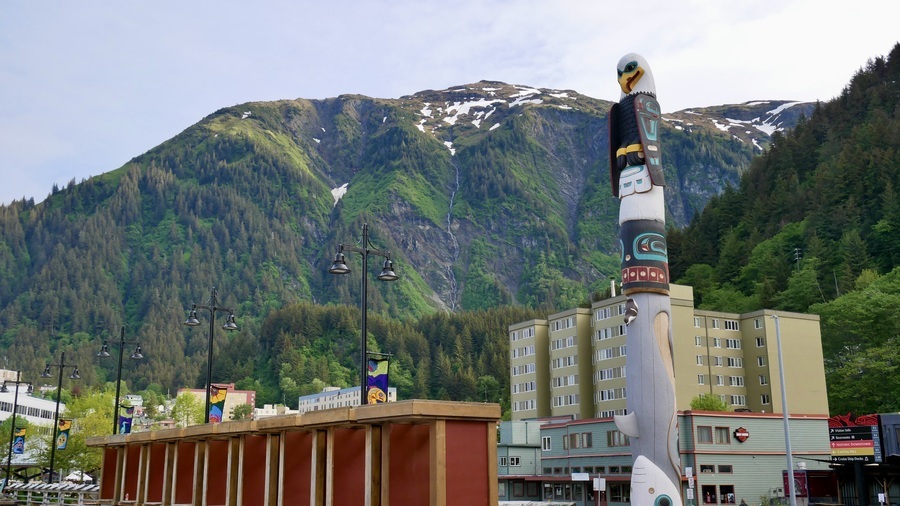
Things to do in Juneau, Alaska
Juneau Alaska is arguably the most beautifully-situated city in America.
Positioned along the scenic Gastineau Channel, it boasts some of Southeast Alaska’s best offerings at its fingertips.
Within Juneau’s reach, you’ll find a massive 1,500-square-mile ice field, craggy snowcapped mountains, abundant wildlife, evergreen forest, and sparkling blue glaciers.
Top Juneau Excursions
As one of the most popular cruise ports in Alaska, Juneau is chock full of excursion opportunities—from self-guided hikes, to bucket-list worthy helicopter adventures Head to the town’s cruise docks on a summer day, and you’ll find a number of tour operators ready to whisk you away on an adventure.
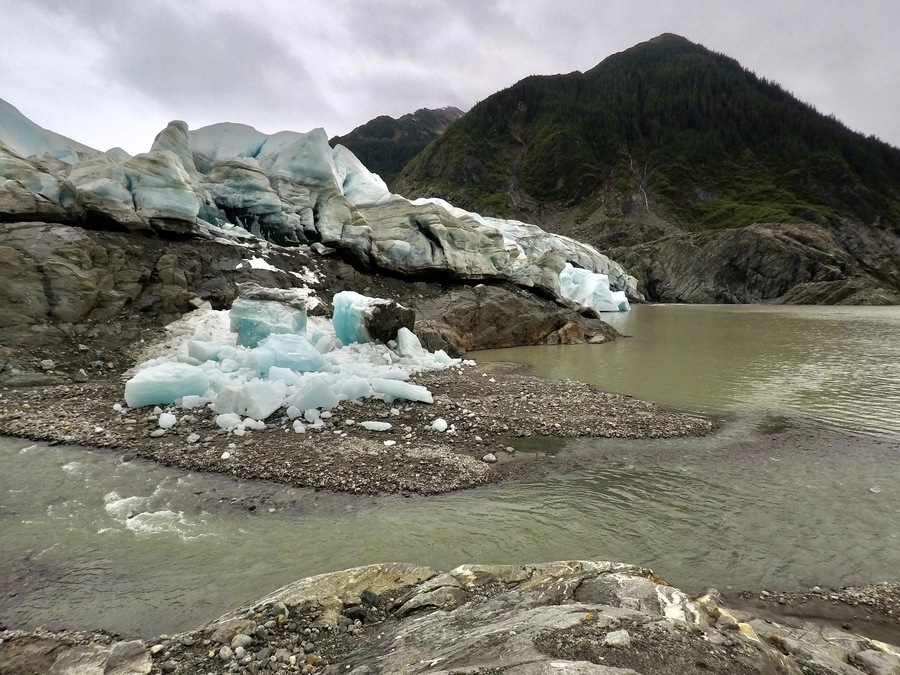
I’ve visited Juneau on numerous occasions as part of my flight attendant job. Each layover—roughly 30 hours in length—has given me a full day to tour Alaska’s capital and its surrounding wilderness.
Over time, I’ve experienced many of the top things to do in Juneau, though some activities remain on my future to-do list.
Downtown Juneau
Juneau’s downtown may be small, but its charming streets and scenic waterfront deserve more than just a passing glance.
Along the main streets of town, you find picturesque western-style buildings that house boutiques, souvenir shops, and tasty eateries.
The storefronts in Juneau’s historic district hearken to the city’s roots as a gold rush town.
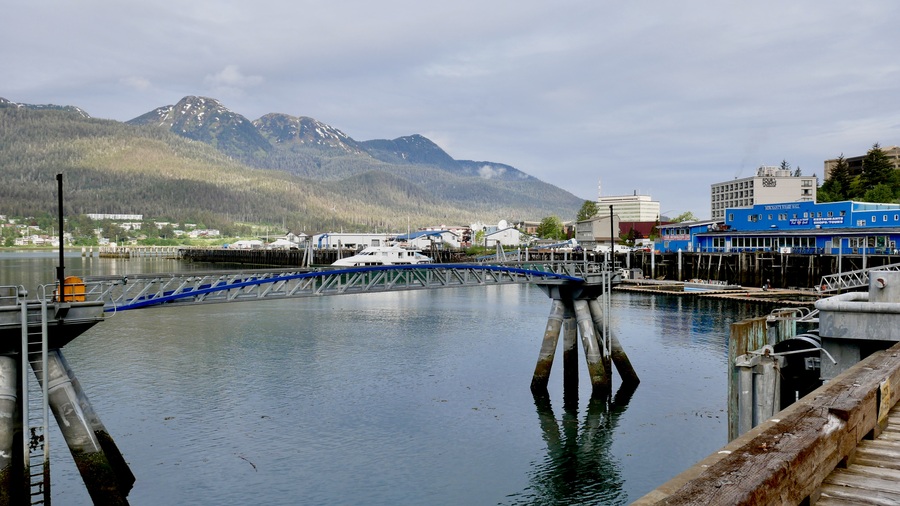
Franklin and Seward are the two main streets in Juneau. The small downtown area is home to two historic churches: a Russian Orthodox church that dates back to 1895, and the Cathedral of the Nativity that was built in 1910.
Aside from the town’s well-preserved nucleus, you’ll want to head down to the docks and check out the waterfront. From there, you can walk along Egan Street—along the Juneau Seawalk—to a small city park that houses an impressive lifelike whale fountain.
Mount Roberts
Mount Roberts is one of Juneau’s most enduring landmarks.
Accessible by hiking or via cable car, it is the best place to enjoy aerial views of Juneau and the Gastineau Channel.
The tramway remains a popular Juneau activity due to its convenience and proximity to the cruise docks. It whisks tourists up to the timberline of Mt Roberts, ascending 1750ft. At the top, you’ll find a restaurants and some gift shops.
If I’m being honest, I think the Mt Roberts tramway is a bit of a ripoff—especially considering the option to hike.
Sure, the view is lovely. But, unless you have physical limitations, loads of cash, or a strong aversion to hiking, I find it hard to justify spending $50 for a short two-minute ride to the viewpoint.
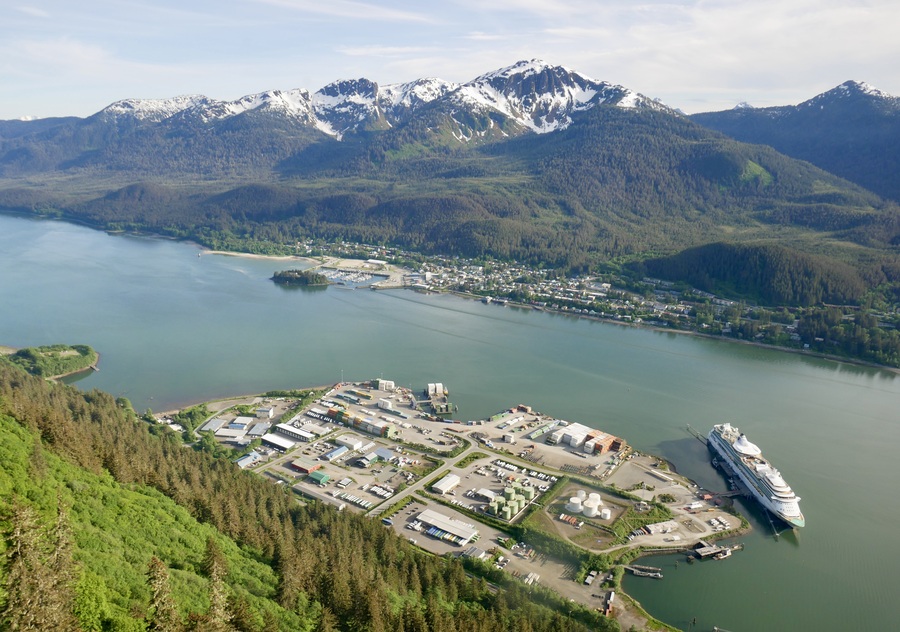
Luckily, you can still soak in the beauty of Mt Roberts without paying the hefty tram fee. The trail to the summit of Mt Roberts is roughly 7.5 miles roundtrip.
At its summit, you’ll find excellent views of the Gastineau Channel, downtown Juneau, and Douglas Island.
If you spend $20 or more in the gift shop, you’ll be able to ride the tram back down the mountain for free.
Mendenhall Glacier
The Mendenhall Glacier lies just outside of the Juneau city limits. Its proximity is one of the city’s most appealing features.
Going to Juneau and not seeing the Mendenhall Glacier is like visiting Rome and skipping the Colosseum. Or bypassing the Egyptian Pyramids on a trip to Cairo. It is, quite simply, the top place to visit in Juneau and my #1 recommendation if you only have limited time to spend in Alaska’s capital.
The Mendenhall Glacier is the most famous of Juneau’s ice floes. It extends more than a dozen miles from the Juneau Icefield and cascades into Mendenhall Lake.
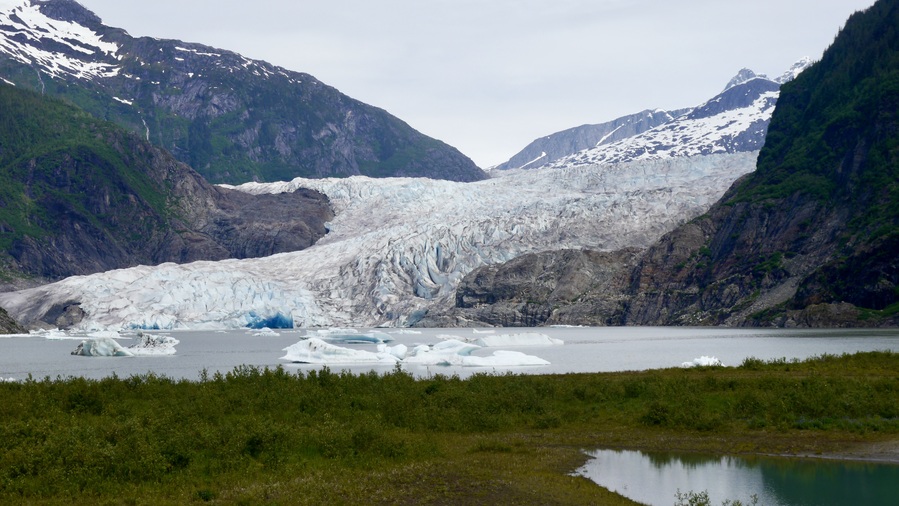
Like many glaciers around the world, the Mendenhall Glacier is quickly retreating. Within the next three decades, scientists predict that you’ll no longer be able to see the half-mile-long glacier face from the visitor center.
To reach the Mendenhall Glacier, you can either drive, join an organized tour, or take the public bus. The public bus stop is located about a mile from the visitor center.
If you choose to visit the attraction by organized excursion, you can join trekking tours that bring you to the edge of the ice, canoe tours that bring you to the glacier face, or excursions that include whale-watching.
The Juneau Ice Caves
No visit to Juneau is complete without a close-up look at the Mendenhall Glacier. So while seeing the sheet of ice from the visitor center is a Juneau highlight, up-close views of the ice caves will give you an entirely different perspective. The shimmering sapphire color is so intense, that it rivals the brilliant shades of blue that we had witnessed at Argentina’s famous Perito Moreno Glacier.
The Juneau Ice Caves show off the best of the Mendenhall Glacier’s iridescent blues. You can access them via the popular West Glacier Trail hike.
If hiking isn’t your cup of tea, you can join a tour of the ice caves that includes canoeing and viewing the glacier up-close.
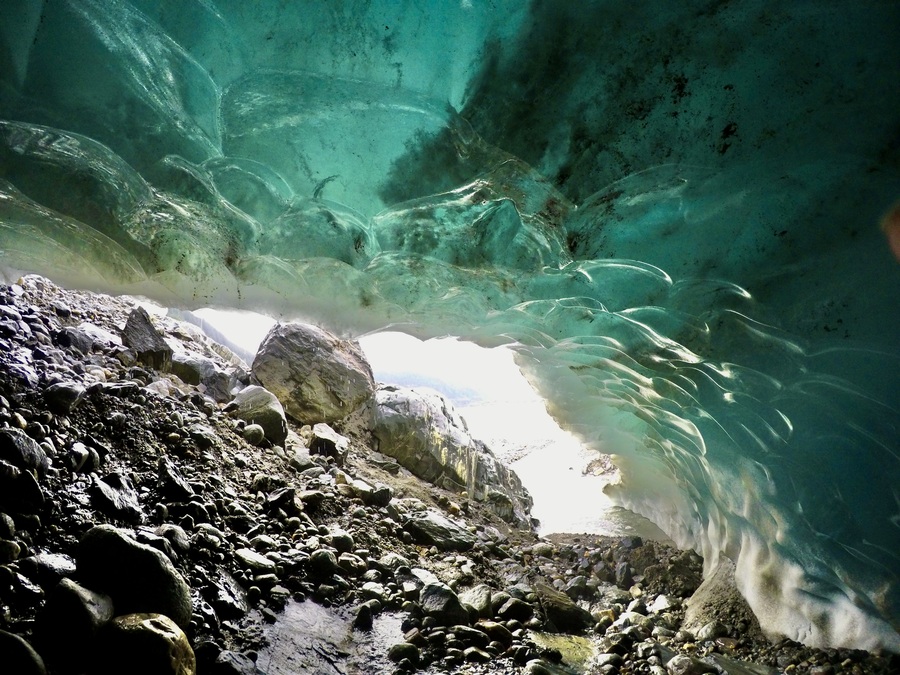
The Mendenhall Glacier has receded almost two miles since 1958. The ice caves are, in part, a function of this glacial melting. They are continually morphing, receding, and reforming.
I hiked to the ice caves a few years ago.
If I were to visit them again, they would probably look entirely different.
Nugget Falls
Nugget Falls plunges 377 ft down a rugged mountainside near the Mendenhall Visitor Center. The cascade makes its descent in two tiers—99 feet and 278 feet respectively—before gushing into the frigid water of Mendenhall Lake.
It is a beautiful waterfall that deserves a closer glance, despite being overshadowed by Juneau’s nearby #1 attraction.
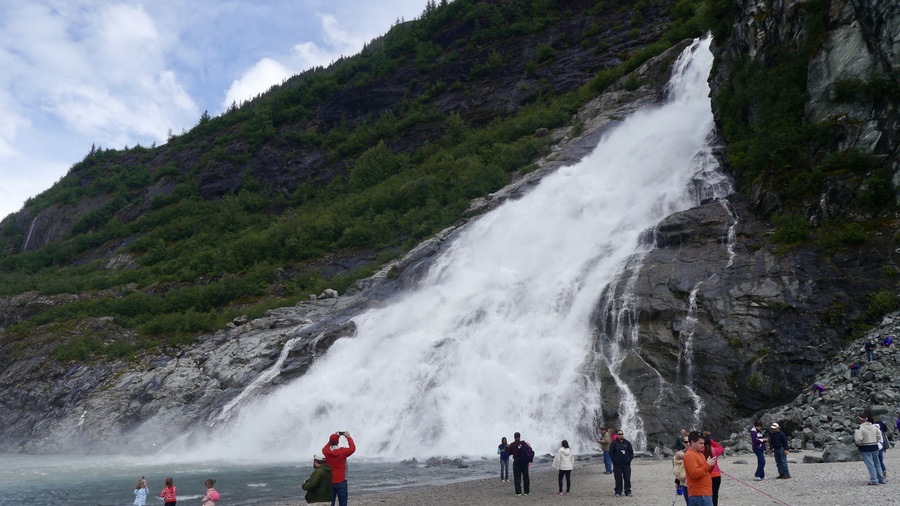
From the visitor center, you can see Nugget Falls to the right of the Mendenhall Glacier. The waterfall is located only 3/4 of a mile away from the glacier face.
The Nugget Falls Trail is less than a mile long. It begins at the visitor center and ends at the thundering cascade, skirting the edge of Mendenhall Lake.
Glacier Gardens
The Glacier Garden and Rainforest Adventure is a top Juneau attraction. It lies along the Glacier Highway, near the city’s airport.
Tours of the garden consist of a guided vehicle ride through the steep terrain of the Tongass National Forest. The tour passes by streams, rock gardens, and small clusters of upside-down trees. It includes a viewpoint that boasts some of the best panoramas of the Juneau Valley.
Throughout the gardens, you’ll find the park’s signature upside-down trees, known as “flower towers.” These creative flower pots have their tops buried in the ground, while their roots form a skyward basket that overflows with trailing flower arrangements.
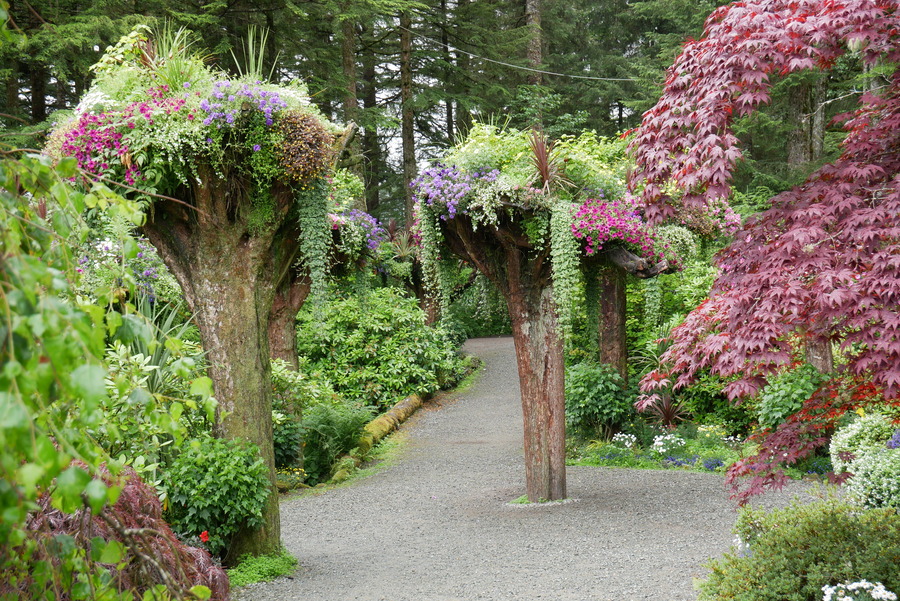
The Glacier Gardens were the creative vision of Steve and Cindy Bowhay, who purchased the property for a stream rehabilitation project. After a devastating landslide took out large chunks of the hillside, the Bowhays transformed the area into a top Juneau tourist attraction.
The story goes something like this: Steve, a landscaper by trade, attempted to restore the stream that had been severely damaged on his property. To mitigate the damage and prevent further erosion, he created various settling ponds. During the rehabilitation work, Steve came across an inverted tree trunk with its top in the mud and roots in the air. The image inspired him to repurpose more than 20 dead trees and turn them into “flower towers.”
As with everything in Juneau, I found the $30 entrance fee to be quite steep.
Nonetheless, I’m happy to have visited.
Shrine of St Therese, Old Glacier Highway
The Shrine of St Therese is a picturesque stone chapel that lies situated on a small promontory north of Juneau. The Catholic church, commissioned by a Jesuit priest in the late 1930s, is a lovely place to visit if you have access to a car or bike.
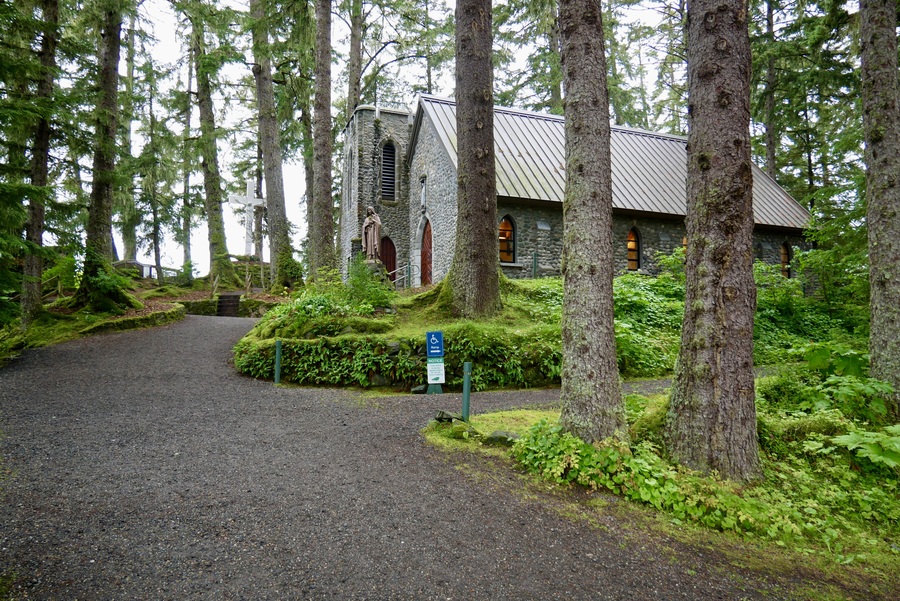
I chose to reach the shrine by bike, since I was traveling solo and didn’t want to shell out so much money on a rental car. Rental cars in Juneau can be pricey, especially during peak summer months.
The bike ride from downtown Juneau to the shrine was approximately 45 miles roundtrip, on undulating terrain.
Though somewhat strenuous, I found the ride to be a pleasant self-guided activity.
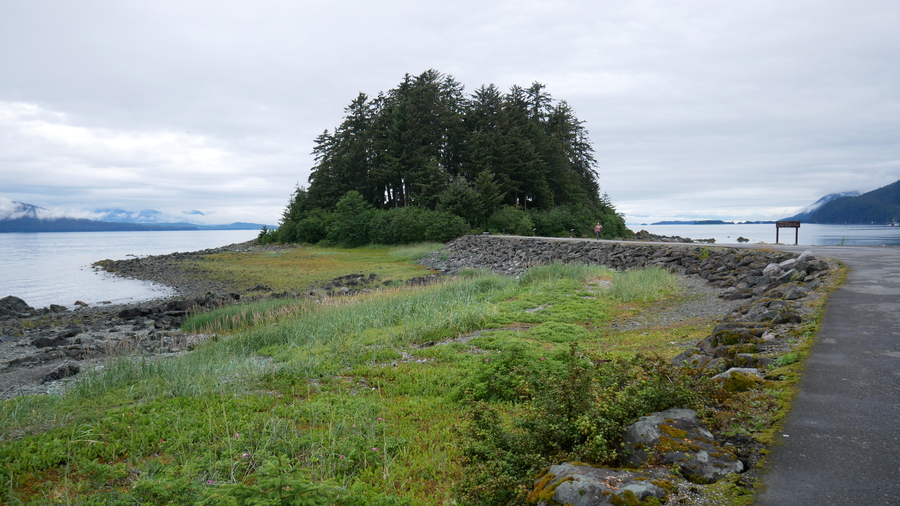
I probably wouldn’t recommend visiting the Shrine of St Therese if you’re traveling by cruise and only have one day in Juneau.
However, if you are sticking around for a few days, the shrine is worth a stop—not least because of its beautiful setting.
Taku Lodge with Wings Airways
Though there are tons of great things to do in Juneau, it is difficult to top a trip to the Taku Lodge.
Flightseeing tours of the Taku Glacier depart from the wharf in downtown Juneau. Operated by Wings Airways, the “flight and feast” tours last about three hours. They include a scenic float plane ride over the Juneau Icefield and a delicious salmon bake at the historic lodge.
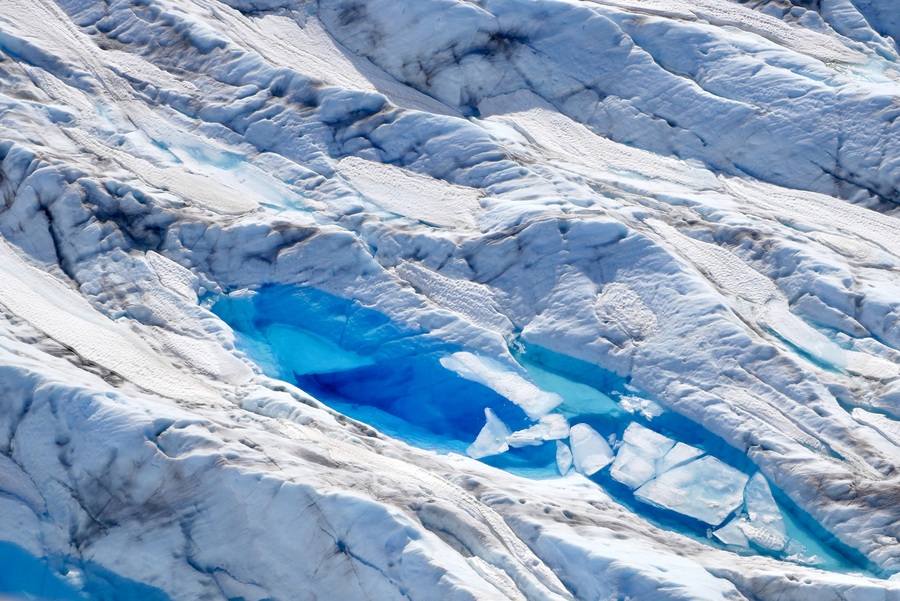
The 35-minute scenic flight shows off the incredible scenery of the Inside Passage. You’ll have the opportunity to see glacier-carved mountains, rugged slopes, and shimmering sapphire snowmelt.
The tour flies over five glaciers: Norris, Taku, East Twin, West Twin, and Hole-in-the-Wall. The views of the surrounding mountains and Juneau Icefield are breathtaking.
Each passenger on board gets a window seat and a set of headphones that provides a recorded overview of the area.
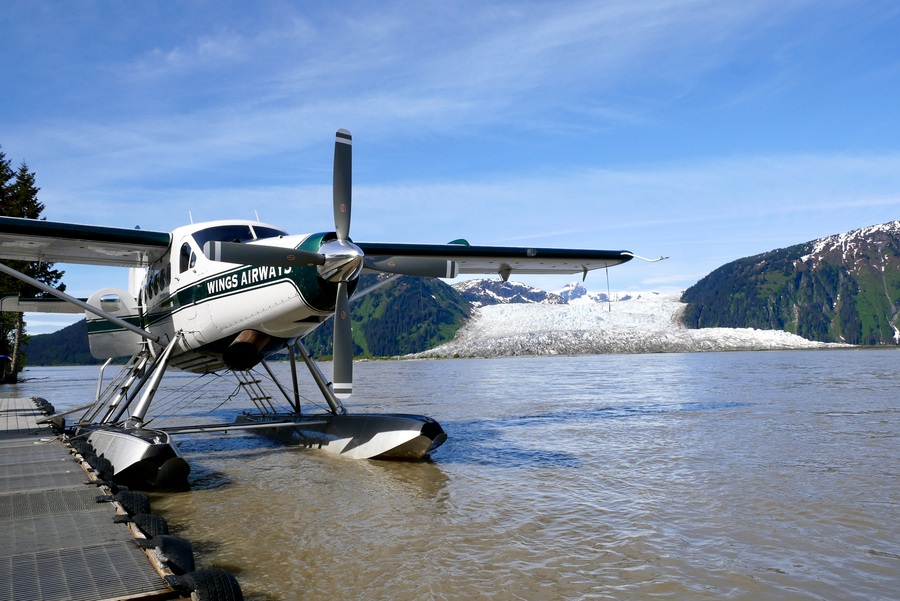
After showcasing the five glaciers, the float plane stops in front of the historic Taku Lodge—a rustic lakeside retreat that dates back to 1923.
We lucked out with fantastic weather on the day of our Taku Glacier Tour. Following a memorable scenic flight, we had a bit of free time to walk along the waterfront, peruse the gift shop, and take in views of the glacier. Then, we sat down for a lovely salmon bake, while the staff gave us an animated presentation about the building’s 100 year history.
Staff at the lodge told us to be on the lookout for black bears (they apparently love to feast on the drippings from the salmon that is cooked outside), but we didn’t see any during our visit.
Whalewatching in Juneau
My Juneau whale-watching trip gave me an opportunity to see twelve humpback whales in their natural habitat. Outside of my trip to Antarctica and South Georgia Island, it was the best encounter I’ve ever had with marine mammals.
During my whale-watching excursion in Juneau, I watched the baleens frolic about—spyhopping, blowing spray, and slapping their tails. There were so many humpbacks splashing about in the water that I had difficulty tracking the action with my camera. At one point, while I was photographing three whales, I spotted a breaching humpback elsewhere, out of the corner of my eye. I didn’t get the photo, but stepped off the boat feeling incredibly lucky.
It remains the only time I’ve ever seen a breaching whale.
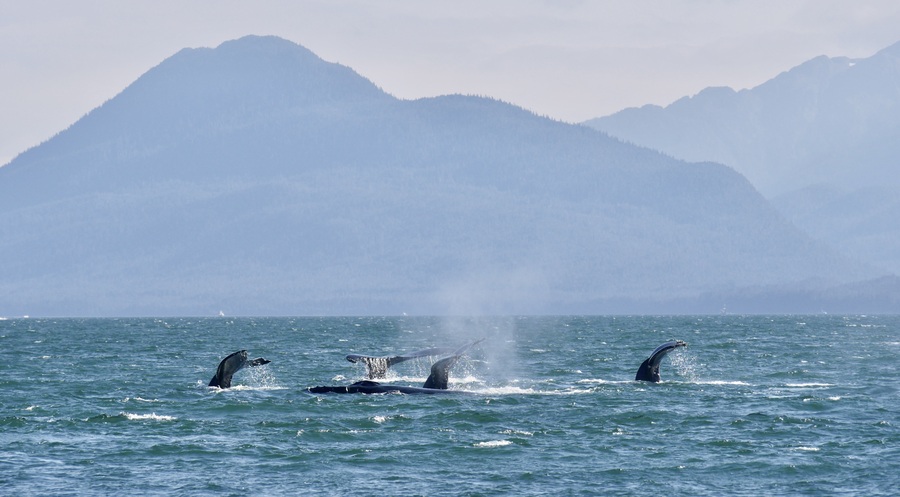
The waters around Juneau are full of cetaceans. Humpbacks, orcas and blue whales feed in the area during summer. The best time to see whales coincides with peak travel season in Juneau (May-September).
Tracy Arm Fjord
Though it isn’t nearly as accessible as the Mendenhall Glacier, reaching the stunning Tracy Arm Fjord is well worthwhile if you have the time. Named after the Secretary of the Navy Benjamin Franklin Tracy, the fjord is a Juneau itinerary highlight.
Tracy Arm lies 45 miles south of Alaska’s capital and is only accessible by boat.
The tour of Tracy Arm Fjord shows off the best of Juneau’s scenery over the course of a day. The boat tour takes approximately seven hours from start to finish. It begins in the Gastineau Channel, before cruising down Tracy Arm’s turquoise waters.
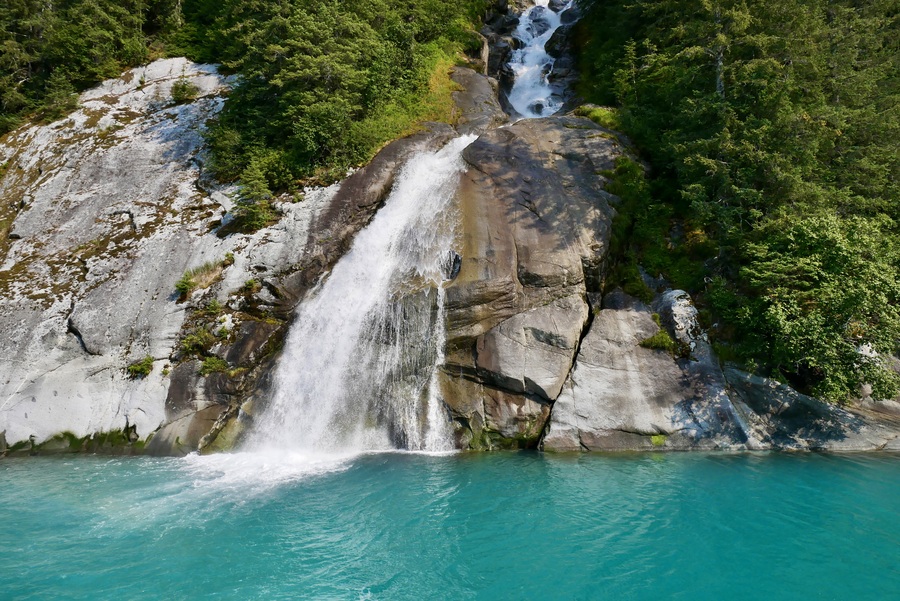
On our boat trip, we admired the milky water and photographed bergy bits as we floated past. We kept our eyes peeled for wildlife—spotting seals on ice floes and mountain goats in the cliffs above the channel.
The twin Sawyer Glaciers (North Sawyer and South Sawyer) are located at the end of Tracy Arm.
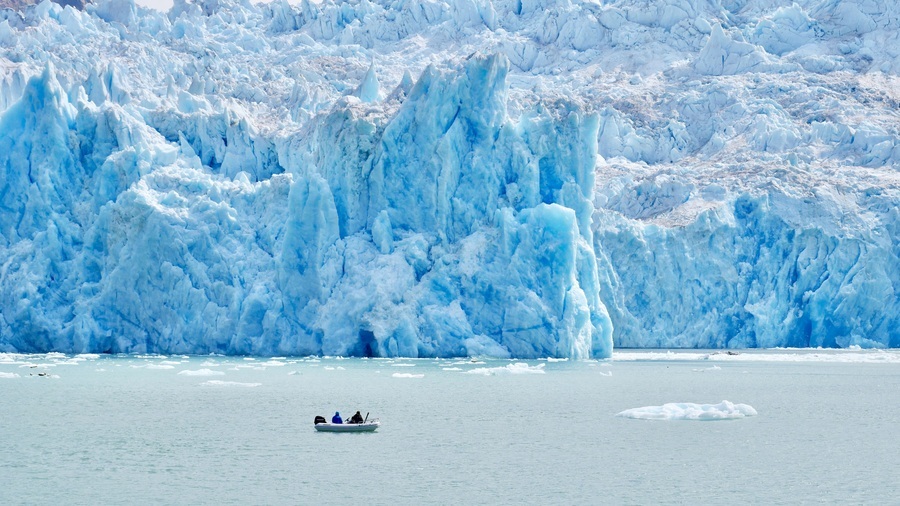
Tours of the Tracy Arm Fjord leave twice a week and cost roughly $200.
Admiralty Island
The native Tlingit people call Admiralty Island ‘Kootznoowoo,’ meaning ‘Fortress of the Bears.’ The island is home to an estimated 1,500 brown bears—more than the combined total of those who inhabit the Lower 48. Most bear-viewing tours of Admiralty Island take visitors to the Pack Creek Viewing Area.
I haven’t taken the trip out to Admiralty Island yet, but a grizzly tour of the area is at the top of my Juneau bucket list. The day tour is expensive though, and will set you back nearly $1,000.
Dog Sledding on a Glacier
Dog sledding is another popular Juneau activity that I have yet to do. As with trips to Admiralty Island, Juneau’s glacier dog sledding tours are expensive.
The tours offer a multi-dimensional experience of Alaska’s wilderness—by air in a helicopter, and then zooming across the ice. Tours begin with a scenic helicopter ride above the Juneau ice field. Once at the glacier camp, you’ll traverse the remote and wild Alaskan tundra, pulled by group of huskies.
Juneau dog sledding tours promise an only-in-Alaska adventure.
One that I would love to experience at some point.
Where to Stay in Juneau
Though it is one of the major cities in Alaska, Juneau has a limited number of accommodation offerings. Many of the town’s tourists come by cruise ship, so its hotel-to-tourist-ratio is quite low. The Four Points by Sheraton and Silverbow Inn are Juneau’s most luxurious offerings, while the Aspen Suites and Juneau Hotel offer rooms at a (slightly) lower price point.
If you’re traveling to Juneau on a budget, the Juneau International Hostel offers a place to stay without breaking the bank. I stayed at the hostel on my first leisure trip to Juneau with Dan and was grateful for a cheap place rest my head, though the low rates came with a pretty large caveat. At the time of my visit, guests were required to sign up for chores and had a 10pm curfew.
Wildlife in Juneau
Wildlife thrives in and around Juneau. The area’s abundance of water, mountains, glaciers, and forest creates a rich habitat for bears, mountain goats, whales, and birds. In its forests—and even occasionally in town—you’ll find a large population of black bears. On numerous occasions, I’ve seen black bears in the fields between the airport and downtown. There are a few brown bears in the Juneau area too, but they tend to stay farther away from the population centers.
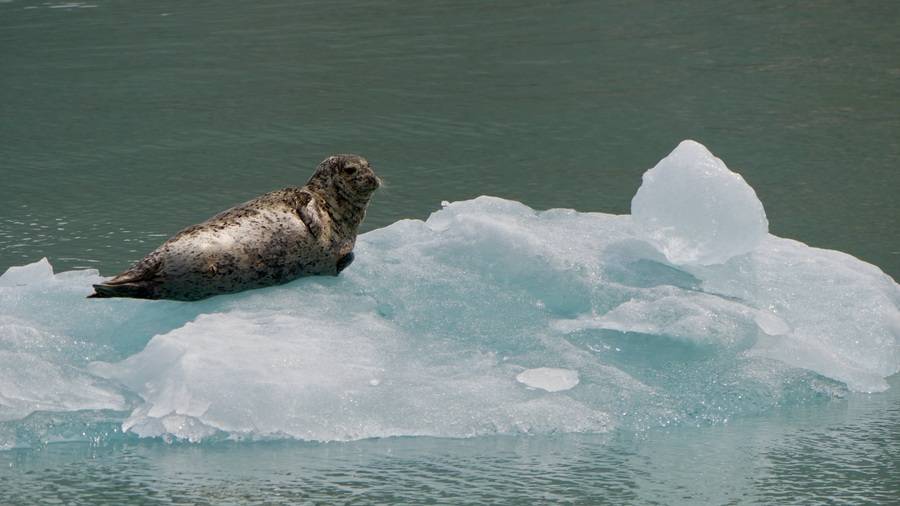
The water around Juneau teems with sea life. Humpbacks and orcas inhabit the marine-rich waters between the months of April and September, alongside a healthy population of seals . While animal-viewing tours can never guarantee sightings, your chances of seeing humpbacks on a summer whale-watching tour are virtually 100%.
Juneau Cruises
Juneau tourism depends heavily on cruise ships. The population of town—33,000 on a normal day—absolutely balloons when ships enter the harbor. This population explosion is especially evident in the evenings, when cruise tourists return to their ships and the jam-packed streets of town empty out.
Most of the major cruise lines vie for a market share in Juneau and Southeast Alaska. At any given time, the town’s docks will harbor boats from large companies like Carnival and Princess, as well as smaller expedition-style lines like Uncruise and Linblad.
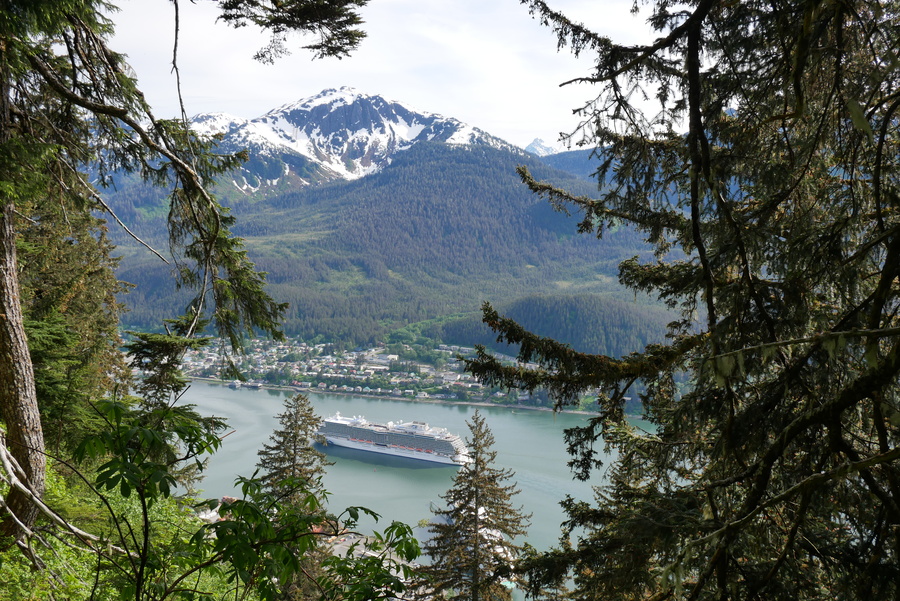
Most tourists tend to book Juneau shore excursions with their cruise company, but you’ll have tons of options to book elsewhere as well (often for a reduced rate).
Outside of the cruise docks near the Mt Roberts tramway, dozens of kiosks sell same-day tours to Juneau’s top attractions.
When to Visit Juneau
Tourism season in Juneau is mostly limited to summer months. In summer—when daylight can last up to 18 hours—high temperatures tend to hover around 60 degrees.
Juneau is perpetually wet. Even in summer, you can expect rainfall about 50% of the time.
Juneau’s tourist season effectively shuts down in winter and most tours and excursions remain inaccessible outside of the May-September window.
If you’re looking to travel to Alaska in winter to see the northern lights, you might want to look toward Fairbanks instead. Juneau’s notoriously overcast skies and southerly position make aurora-viewing difficult.
Getting to Juneau
There are no roads connecting Juneau to the rest of Alaska. To reach the state capital, you’ll either have to fly or travel by boat along the Alaska Marine Highway that stretches from Bellingham to the Aleutians.
Sailing to Juneau from Bellingham Washington along the Alaska Marine Highway takes three days.
****
In the 1880s, prospectors descended upon Juneau in search of gold.
Today, you can still go panning for gold, but the town has become a gateway to something even better: Some of the most untouched and pristine wilderness in the world.

